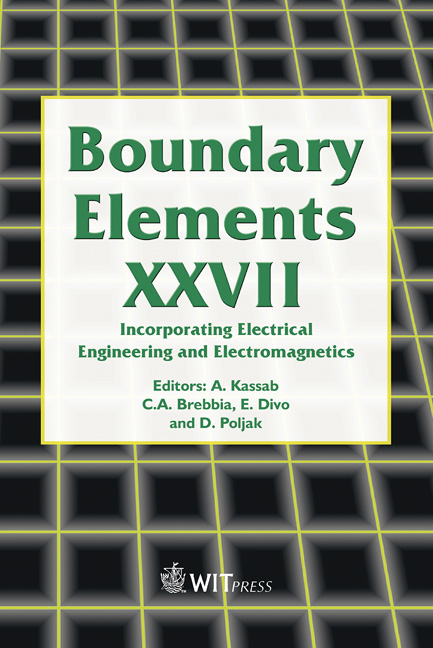Simplification Of Pocklington’s Integral Equation For Arbitrary Bent Thin Wires
Price
Free (open access)
Transaction
Volume
39
Pages
12
Published
2005
Size
359 kb
Paper DOI
10.2495/BE050521
Copyright
WIT Press
Author(s)
V. Barrera-Figueroa, J. Sosa-Pedroza & J. López-Bonilla
Abstract
It is widely accepted that Pocklington’s equation is a useful tool in obtaining the antenna current distribution, solved via the Method of Moments. This paper presents a way to simplify the kernel of Pocklington’s integro-differential equation for arbitrary shaped thin wires, and the solution in a C++ software implementation to reduce time and programming effort. We present the wellknown solution for a dipole and a circular loop antenna as an example. Keywords: method of moments, Pocklington’s equation, point matching technique, current distribution. 1 Introduction The current distribution in any conductor is the way to know its electromagnetic behavior and the key to obtain the electromagnetic field at any point of the surrounded space (through the magnetic and electric potentials), and most of the antenna parameters as: input impedance, radiation pattern, gain, etc. The classical antenna analysis guesses the current distribution along the antenna using the transmission line theory, for simple structures the method had proved its efficiency, but in complex ones (such as helical antennas or cross antennas) the method is not useful because there is not a start theory to guess the current distribution; when this is the case computational methods are widely used; one of those is the well known method of moments (MM), introduced by Galerkin and popularized in 1967 by Harrington [1], when applied, in an electromagnetic problem, gives results whose accuracy is as good as the engineer needs or the computer could provide.
Keywords
method of moments, Pocklington’s equation, point matching technique, current distribution





